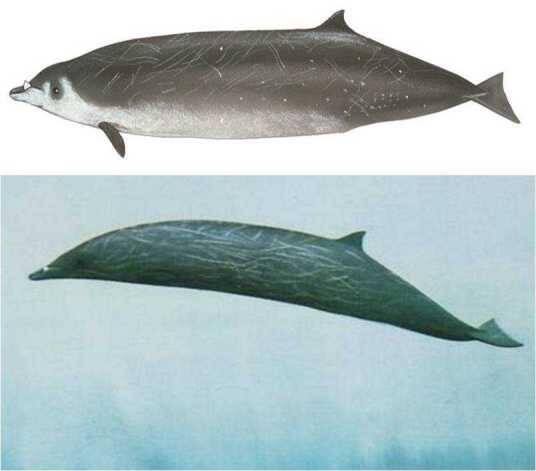Mesoplodon stejnegeri
IUCN
LCBasic Information
Scientific classification
- name:Mesoplodon stejnegeri
- Scientific Name:Stein's beaked whale, North Pacific beaked whale, Saber-toothed beaked whale, Bering Sea beaked whale
- Outline:Cetacea
- Family:D.whale
Vital signs
- length:No verification information
- Weight:1-1.5 tons
- lifetime:No verification information
Feature
The teeth are in the center of the lip line, and the dark forehead is gently sloping.
Distribution and Habitat
Many of the earlier records were later identified as other species of the genus Mesobacterium, so there is some confusion about the range. The main source of information is from strandings, but experienced whale watchers have reported several from Alaska, especially the Aleutian Islands (apparently the center of the range). Although sometimes called Bering Sea beaked whales, they seem to inhabit only the deep waters of the southern end of the Bering Sea; shallower waters further north may be less common. There are also small but distinct populations in the Sea of Japan, especially off the coasts of Honshu and southern Hokkaido. Prefers deep waters beyond the continental shelf.
Appearance
A pair of teeth protrudes from the center of the lip line, a dark forehead with a gentle slope, a black, dark gray or brown back, and may have white oval scars on the sides of the body. The small dorsal fin is almost triangular or hooked, with a slightly concave rear edge, a well-developed dorsal ridge extending from the dorsal fin to the caudal fin, a long beak, a distinctly curved lip line, small pectoral fins, a light-colored or scarred abdomen, a spindle-shaped body, and some scars on the body.
Females and calves have no protruding teeth and may be difficult to distinguish from other beaked whales. Adult males are unique in that they have two large, laterally flattened teeth about 20 cm from the front of the lower jaw, and a very curved lip line; some of the two teeth bend toward each other and cut into the upper "lip". The juvenile has a distinct light-colored neck stripe. Although the white cap on the head of Hart's beaked whale is a distinct feature, it can sti
Details
Stejneger's Beaked Whale, scientific name Mesoplodon stejnegeri, foreign name Stejneger's Beaked Whale, is not easy to see at sea, and it is rare to see it alive. Maybe it is rare, but it may just live in an area where few people study it and avoid people's attention. Small groups sometimes move side by side almost touching each other, and they will rise and dive together. Reports show that after 5 or 6 shallow dives, they will go for a long dive of 10 to 15 minutes. Dives include slow, casual rolls on the sea surface. Groups usually include small and large individuals, showing a mixture of various ages and genders. The jet is sometimes clearly discernible, but the air column is usually low and not obvious. It is not very easy to approach.

Protect wild animals and eliminate game.
Maintaining ecological balance is everyone's responsibility!








